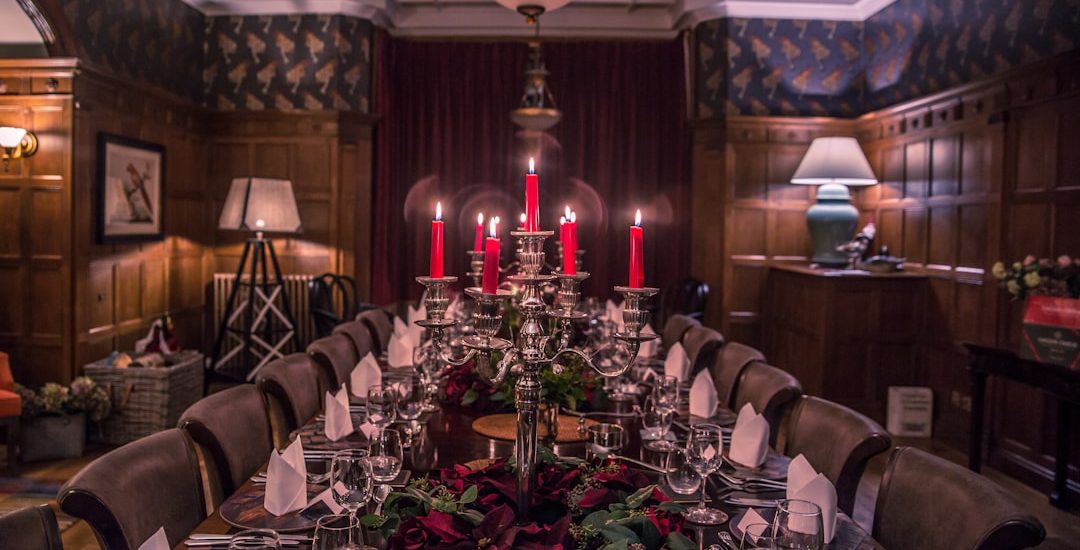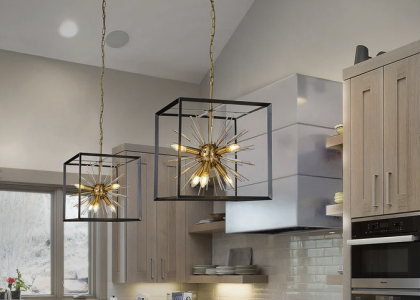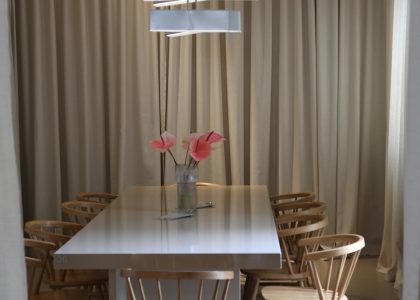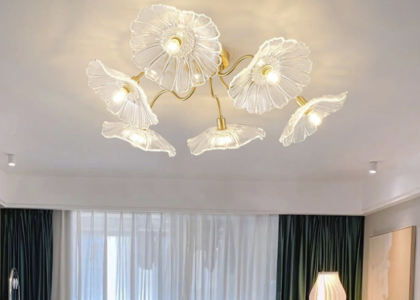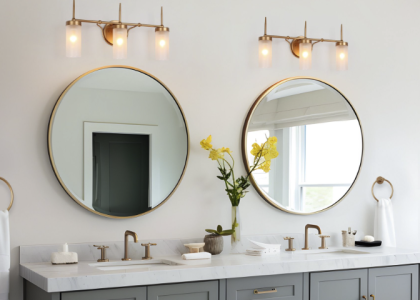Quality lighting is essential for creating a comfortable and inviting atmosphere in any space. Whether it’s in a home, office, or commercial setting, the right lighting can make a significant difference in the overall ambiance and functionality of a room. Good lighting not only illuminates a space but also enhances its aesthetic appeal, making it more visually appealing and comfortable to be in.
In addition to aesthetics, quality lighting also plays a crucial role in promoting productivity and well-being. Proper lighting can reduce eye strain, improve concentration, and create a sense of comfort and relaxation. It can also highlight architectural features, artwork, and decor, adding depth and character to a room.
Furthermore, quality lighting 88off can contribute to energy efficiency and sustainability, as modern lighting technologies offer options that consume less energy and have a longer lifespan. Overall, investing in quality lighting is an important consideration for anyone looking to create a functional, comfortable, and visually appealing space. When it comes to quality lighting, choosing the right lamp is crucial.
The lamp you select will not only impact the overall look and feel of the space but also its functionality and energy efficiency. With so many options available on the market, it’s important to consider factors such as the type of light, the size and style of the lamp, and its energy efficiency. By understanding these factors, you can make an informed decision and choose a lamp that meets your specific needs and enhances the overall ambiance of your space.
Choosing the Right Lamp for Your Space
Understanding Different Types of Lighting
Ambient lighting provides overall illumination for a space and is typically achieved with ceiling fixtures or floor lamps. Task lighting, on the other hand, is focused on specific areas where activities such as reading or working take place and is often provided by desk or table lamps. Accent lighting is used to highlight specific features or objects in a room, such as artwork or architectural details, and can be achieved with spotlights or wall-mounted fixtures.
Considering Size and Style
In addition to the type of light, the size and style of the lamp are also important considerations. The size of the lamp should be proportionate to the size of the space and the furniture it will be placed near. A large room with high ceilings may require a larger, statement-making lamp, while a smaller room may benefit from a more understated design. The style of the lamp should also complement the overall decor of the space.
Energy Efficiency and Sustainability
Energy efficiency is another important factor to consider when choosing a lamp. LED lamps are an excellent choice for those looking to reduce energy consumption and minimize their environmental impact. LED lamps use significantly less energy than traditional incandescent bulbs and have a much longer lifespan, making them a cost-effective and sustainable lighting option. By considering the type of light, size and style of the lamp, and its energy efficiency, you can choose a lamp that not only enhances the ambiance of your space but also meets your specific lighting needs.
Understanding Different Types of Lamps
There are various types of lamps available on the market, each with its own unique features and benefits. Understanding the different types of lamps can help you make an informed decision when selecting the right lighting for your space. Some common types of lamps include table lamps, floor lamps, desk lamps, pendant lamps, chandeliers, and wall sconces.
Table lamps are versatile lighting fixtures that can be placed on bedside tables, end tables, or desks to provide ambient or task lighting. They come in a wide range of styles and sizes, making them suitable for various spaces and decor styles. Floor lamps are freestanding fixtures that provide ambient lighting and can be used to illuminate larger areas or fill in dark corners.
They are available in a variety of designs, from sleek and modern to traditional and ornate. Desk lamps are designed to provide focused task lighting for activities such as reading, writing, or working on a computer. They are typically adjustable to direct light where it’s needed most.
Pendant lamps are suspended from the ceiling and can be used to provide ambient or task lighting over dining tables, kitchen islands, or in entryways. Chandeliers are decorative ceiling-mounted fixtures that add elegance and drama to a space while providing ambient lighting. Wall sconces are mounted on walls and can be used to provide ambient or accent lighting in hallways, bathrooms, or living spaces.
By understanding the different types of lamps available, you can choose the right lighting fixtures that best suit your space and meet your specific lighting needs.
Tips for Proper Placement of Lamps
Proper placement of lamps is essential for creating a well-lit and visually appealing space. Whether you’re looking to illuminate a specific area for task lighting or create an inviting ambiance with ambient lighting, there are several tips to keep in mind when placing lamps in your space. When it comes to table lamps, they should be placed at an appropriate height to provide adequate illumination without causing glare.
A good rule of thumb is to position the bottom of the lampshade at eye level when seated. This ensures that the light is directed downward onto the task at hand without shining directly into your eyes. Floor lamps can be used to fill in dark corners or provide ambient lighting in larger spaces.
When placing a floor lamp, consider the height of the room and the surrounding furniture. A tall floor lamp can draw attention to high ceilings and create a sense of verticality, while a shorter floor lamp can provide subtle ambient lighting without overpowering the space. Pendant lamps should be hung at an appropriate height to provide functional illumination while also creating visual interest.
When hanging pendant lamps over a dining table or kitchen island, consider the height of the ceiling and the size of the fixture to ensure that it complements the scale of the space. Chandeliers are often used as statement pieces in dining rooms or entryways and should be placed at an appropriate height to create a focal point without overwhelming the room. Wall sconces can be used to provide ambient or accent lighting in hallways, bathrooms, or living spaces and should be placed at eye level for optimal illumination.
By following these tips for proper placement of lamps, you can create a well-lit and visually appealing space that meets your specific lighting needs.
Enhancing Ambiance with Dimmer Lamps
Dimmer lamps are an excellent way to enhance ambiance and create a versatile lighting scheme in any space. By allowing you to adjust the brightness of the light, dimmer lamps offer flexibility and control over the mood and atmosphere of a room. Whether you’re looking to create a cozy and intimate setting for entertaining guests or want to create a relaxing environment for unwinding after a long day, dimmer lamps can help you achieve the perfect ambiance.
Dimmer lamps are available in various styles and designs, from table lamps and floor lamps to pendant lights and chandeliers. They can be used in living rooms, bedrooms, dining areas, or any other space where adjustable lighting is desired. By simply turning a dial or sliding a switch, you can easily adjust the brightness of the light to suit your specific needs.
In addition to creating ambiance, dimmer lamps also offer energy-saving benefits. By reducing the brightness of the light when full illumination is not necessary, dimmer lamps can help conserve energy and reduce electricity costs. This makes them an environmentally friendly option for those looking to minimize their carbon footprint while enjoying customizable lighting options.
Whether you’re hosting a dinner party, enjoying a quiet evening at home, or simply want to create a warm and inviting atmosphere in your space, dimmer lamps are an excellent choice for enhancing ambiance and creating a comfortable environment.
Maintenance and Care for High-Quality Lamps
Cleaning Your Lamp
Regular cleaning is important for keeping lamps looking their best and functioning properly. Dust and dirt can accumulate on lampshades, bulbs, and bases over time, affecting their appearance and performance. To clean your lamp, start by unplugging it from the power source and allowing it to cool down if it has been in use. Use a soft cloth or duster to gently remove dust from the lampshade, base, and any exposed bulbs. For more stubborn dirt or stains, you can use a mild soap solution or specialized cleaning products recommended for use on lamp materials such as fabric or metal.
Inspecting and Maintaining Your Lamp
In addition to cleaning, it’s important to check for any signs of wear or damage on your lamps regularly. Loose or frayed cords should be replaced immediately to prevent electrical hazards. Bulbs should be replaced as soon as they burn out to maintain consistent illumination. If your lamp has any movable parts such as adjustable arms or hinges, make sure they are tightened periodically to prevent wobbling or instability.
Proper Storage and Handling
Proper storage is also important for maintaining high-quality lamps when they are not in use. If you need to store your lamps for an extended period, make sure they are clean and dry before placing them in a protective covering such as a cloth bag or box. Store them in a cool, dry place away from direct sunlight to prevent damage from heat or moisture. By following these maintenance and care tips, you can ensure that your high-quality lamps continue to provide optimal illumination and enhance the ambiance of your space for years to come.
Budget-Friendly Options for Quality Lighting
Creating quality lighting doesn’t have to break the bank. There are plenty of budget-friendly options available that allow you to achieve optimal illumination and enhance the ambiance of your space without overspending. One cost-effective option for quality lighting is to invest in energy-efficient LED bulbs.
LED bulbs consume significantly less energy than traditional incandescent bulbs and have a much longer lifespan, making them an excellent choice for those looking to save on electricity costs while enjoying high-quality illumination. Another budget-friendly option is to consider DIY projects or upcycling existing fixtures to create custom lighting solutions. With some creativity and basic tools, you can transform everyday objects such as mason jars, wine bottles, or wire baskets into unique pendant lights or table lamps that add character and personality to your space without breaking the bank.
Shopping at thrift stores or online marketplaces is another great way to find quality lighting fixtures at affordable prices. You can often find gently used or vintage lamps that are still in good condition at a fraction of the cost of new ones. With some minor cleaning or minor repairs, these pre-loved fixtures can be transformed into stylish additions to your space.
Finally, consider investing in multifunctional lighting fixtures that serve multiple purposes. For example, a floor lamp with adjustable arms or multiple light sources can provide both ambient and task lighting in one fixture, eliminating the need for multiple lamps in a single space. By exploring these budget-friendly options for quality lighting, you can create a well-lit and visually appealing space without exceeding your budget constraints.

